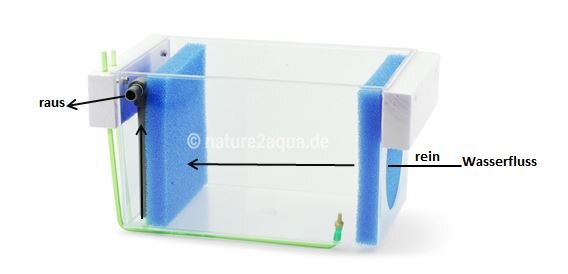Our floating rearing box is primarily used for rearing young fish. It can of course also be used for individual fish, shrimps or crayfish, e.g. for targeted short-term medical treatment with a subsequent fresh water supply.
The rearing of juvenile fish and especially L-catfish requires a relatively large amount of high-quality food. If the fry swim freely in the tank with their parents, they often do not get enough food and breeding success is only moderate. In order to get as many animals through as possible, it makes sense to feed them specifically in a smaller container. A simple hanging box (EHK) without active filtration, such as a guppy breeding box, will become dirty very quickly and the food will rot and go mouldy. The water quality quickly deteriorates for the sensitive young fish. A great deal of maintenance is then required.
This can be remedied by active filtration in the hanging box. The water in the EHK is completely replaced 20-30 times an hour, mulm and food residues migrate to the filter sponges and are biodegraded there, as in other mat filters. This means that a fairly large number of fry can be fed ad libitum in a small space. For example, we regularly rear up to 100 ancistras up to 2-2.5 cm in size in our large rearing box.



